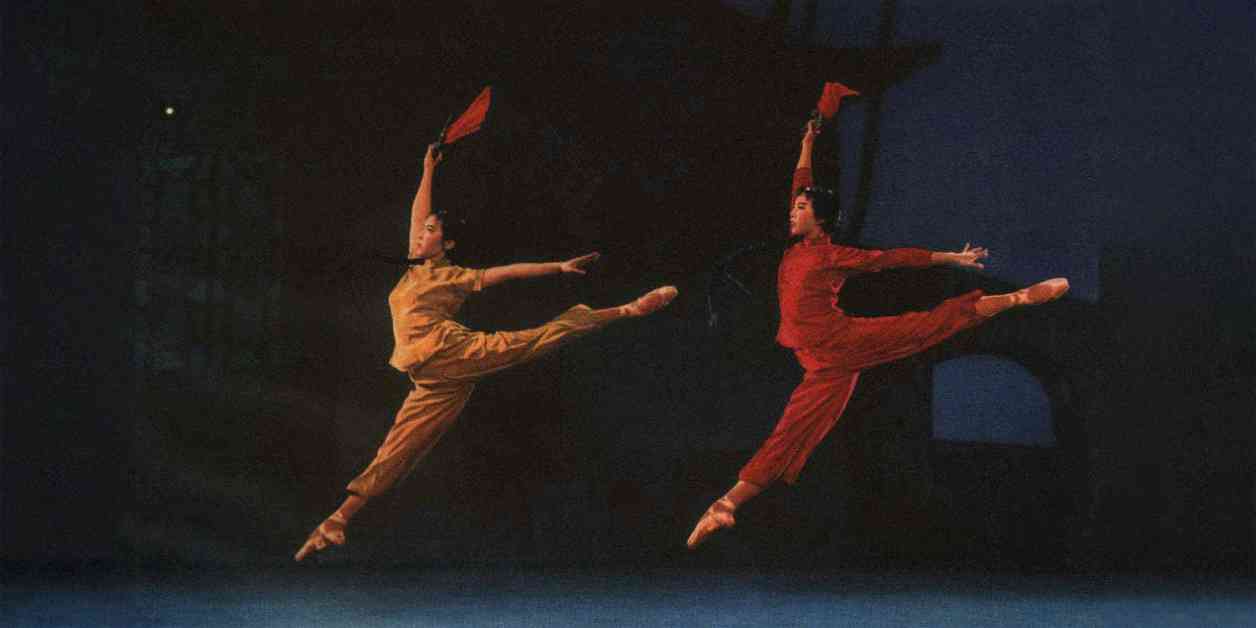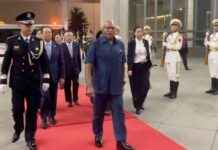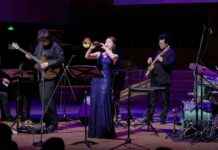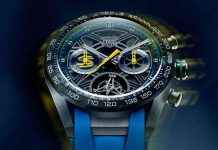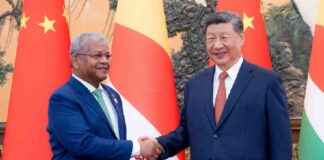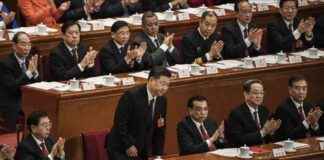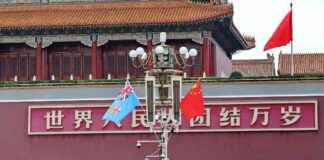Exploring the Diverse Bodies of Chinese Dance: A Cultural Perspective
Emily Wilcox, a distinguished professor of Chinese studies at William & Mary in the United States and a recipient of the John Simon Guggenheim Memorial Foundation Fellowship in Dance Studies in 2024, has delved deep into the history of Chinese dance in her groundbreaking book, “Revolutionary Bodies.” This seminal work traces the evolution of concert dance in China from the 1930s to the present, shedding light on the intricate relationship between revolutionary ideals and the physical expression of dance. As the first English-language history of Chinese dance based on primary sources, “Revolutionary Bodies” has garnered critical acclaim, winning the prestigious 2019 de la Torre Bueno Prize from the Dance Studies Association. The book’s Chinese translation, published by Fudan University Press, further solidifies its significance in the field.
In a recent interview with the Shanghai Review of Books during a research trip to Beijing, Wilcox delved into the nuances of Chinese dance, shedding light on the pluralistic nature of the art form and its deep-rooted connection to national cultural identity. Here, we explore some key insights from the interview, offering a glimpse into the rich tapestry of Chinese dance from a cultural perspective.
### The Relationship Between “Revolution” and “Bodies” in Chinese Dance
Wilcox’s book, “Revolutionary Bodies,” delves into a pivotal period in Chinese dance history, spanning from the cultural movement initiated in Yan’an in the early 1940s to the post-1949 socialist state-building era. This period, characterized by leftist political ideals, witnessed the emergence of a dance phenomenon deeply intertwined with national cultural identity. Wilcox’s research aims to unravel the ways in which revolutionary ideals shaped the physical expressive form of dance in China, emphasizing themes of political equality across classes, genders, and ethnicities.
The plural “bodies” in the title underscores the diverse and multifaceted nature of contemporary Chinese dance. From classical to ethnic and folk dance forms, Chinese dance embodies a rich tapestry of regional and ethnic diversity. Moreover, the plural form also alludes to the ongoing debates and dialogues within the Chinese dance community, including discussions around the intersection of Chinese dance with ballet and the contrasting viewpoints of prominent figures like Dai Ailian and Wu Xiaobang. Each era, Wilcox suggests, gives rise to new forms of the human body that symbolize revolutionary and national cultural ideals, reflecting the dynamic evolution of Chinese dance over time.
### The Genres of Chinese Dance: Kinesthetic Nationalism and Cultural Inclusiveness
In her research, Wilcox identifies three core commitments that define the genres of Chinese dance: kinesthetic nationalism, ethnic and spatial inclusiveness, and dynamic inheritance. These commitments highlight the deep-seated connection between Chinese dance and the idea of the nation-state, emphasizing the role of dance in forging a sense of national identity and cultural heritage. While acknowledging the international origins of Chinese dance and the significant contributions of multicultural dancers to its early development, Wilcox underscores the importance of grounding Chinese dance in its unique cultural context.
The five “founders of Chinese dance” that Wilcox introduces — Dai Ailian, Wu Xiaobang, Qemberxanim, Liang Lun, and Choi Seung-hee — represent a diverse array of cultural backgrounds and experiences. While some, like Dai Ailian, drew inspiration from their multicultural upbringing to redefine Chinese dance on their own terms, others, such as Wu Xiaobang, initially sought to incorporate Western dance forms before embracing traditional Chinese elements. Wilcox’s exploration of the relationship between nationalism and cosmopolitanism in Chinese dance sheds light on the complex interplay between global influences and local cultural identities, highlighting the dynamic nature of Chinese dance as it evolves and adapts to changing social contexts.
### Inter-Asia Dance Studies: Decentering the West and Embracing Transnational Perspectives
Wilcox’s research extends beyond the confines of traditional cross-cultural studies, delving into the concept of “Inter-Asia” as a framework for understanding the interconnectedness of Asian countries and actors with shared historical experiences. By decentering the West and emphasizing the inter-referential relationships within Asia, Wilcox challenges conventional narratives of cultural exchange and highlights the rich tapestry of cross-cultural interactions that have shaped Chinese dance history.
Through her upcoming book, “Performing Solidarities: Dancing the World in Mao’s China, 1949–1976,” Wilcox aims to explore the interactions between socialist China and the international community from a dance perspective. By examining the role of dance in fostering internationalism, Afro-Asianism, and post-colonialism, Wilcox seeks to reimagine the history of 20th-century dance through a lens that prioritizes the contributions of African, Asian, Latin American, and socialist countries. By highlighting the transnational flows of dance and the cultural exchanges that took place during the “17 years” period, Wilcox challenges the notion of China as a closed and isolated entity, revealing the vibrant exchange of ideas and artistic expressions that defined this era.
### Dance and Film: Recording Movement and Preserving Cultural Heritage
The relationship between dance and film is a central theme in Wilcox’s research, as she explores the ways in which film serves as a medium for documenting and preserving dance performances. By analyzing dances recorded in films and interpreting their meanings within specific historical contexts, Wilcox sheds light on the intricate interplay between dance and visual media. In her co-edited book, “Teaching Film from the People’s Republic of China,” Wilcox and her colleagues seek to introduce students to the complexities of post-1949 Chinese cinema, encouraging them to critically engage with films as artistic expressions that reflect broader societal trends.
Looking ahead, Wilcox acknowledges the shifting landscape of dance performance, with a growing emphasis on television talent shows and short videos viewed on mobile phones. While these platforms offer new avenues for showcasing dance to a wider audience, Wilcox emphasizes the importance of maintaining the artistry and professionalism of Chinese dance in these evolving mediums. By highlighting the example of Gülmire Mehmet, a Uyghur dancer who rose to fame on a popular dance program, Wilcox underscores the ways in which contemporary platforms are reshaping the aesthetics and accessibility of Chinese dance, ushering in a new era of digital engagement and artistic expression.
### Inclusive Perspectives: Engaging Minor and Grassroots Dancers in Dance Research
Wilcox’s research on Chinese dance primarily focuses on professional works and artists in dance academies and troupes, emphasizing the importance of treating Chinese dance as an art form worthy of equal dialogue with global concert dance styles. While her book delves into the professional development of Chinese dance, Wilcox acknowledges the rich tapestry of social venues and activities where Chinese dance thrives, from commercial performances to student extracurricular activities. While her research primarily centers on theater performances, Wilcox expresses a keen interest in exploring the reception of dance by minor or grassroots dancers and general audiences in the future, highlighting the diverse and inclusive nature of Chinese dance as it continues to evolve and adapt to changing societal norms.
As Emily Wilcox continues to unravel the complexities of Chinese dance history and its interconnectedness with broader cultural and political movements, her work stands as a testament to the enduring legacy of this vibrant art form. By shedding light on the diverse bodies of Chinese dance and their dynamic evolution over time, Wilcox offers a nuanced perspective on the rich tapestry of cultural expressions that define this unique art form. Through her interdisciplinary approach and commitment to fostering transnational dialogues, Wilcox’s research opens new pathways for understanding the multifaceted nature of Chinese dance and its enduring impact on global cultural heritage.
